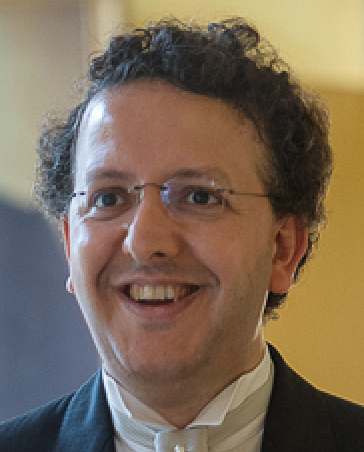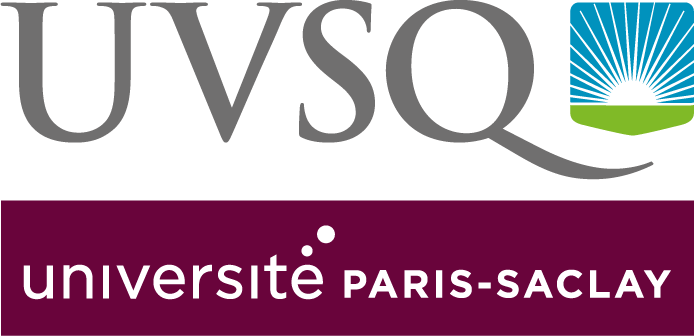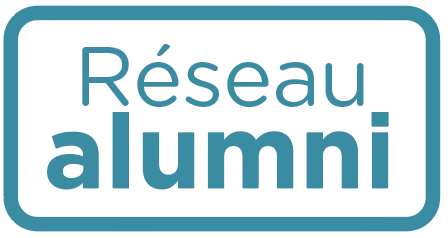Vous êtes ici : UVSQ Recherche
- Partager cette page :
- Version PDF

M. BECHIR JARRAYA
PROFESSEUR(E) DES UNIVERSITES - PRATICIEN(NE) HOSPITALIER(E) (PUPH)
Neurochirurgien à l'hôpital Foch, Directeur de l'équipe Inserm "Primate consciousness and cognition", CEA Paris-Saclay, Centre NeuroSpinCoordonnées
- Tél
- 0146252966
- Secrétariat
- 0146257341
- Adresse mail
- bechir.jarraya@uvsq.fr
- Autre adresse mail
- bechir.jarraya@cea.fr
- Site internet
- http://www.unicog.org/
Discipline(s)
Médecine et santé
Discipline(s) enseignée(s)
Thérapeutique , Neurochirurgie, Neurosciences
Activités / CV
Position actuelle
Professeur des universités - praticien hospitalier en thérapeutique, Faculté de médecine, 2014-
Neurochirurgien, Neurochirurgie fonctionnelle/Neuromodulation (maladie de Parkinson, tremblement, douleur chronique, handicap neurologique), Hôpital Foch, 2011-
Responsable d’équipe de recherche en neurosciences (neuroimagerie, neuromodulation, conscience), NeuroSpin-CEA, UniCog Inserm U992, 2008-
Cursus Académique
Internat des Hôpitaux de Paris, DES de Neurochirurgie, 1998-2005
DU « Stéréotaxie», Université Paris 6 UPMC, 2002
Master2 de Neuroscience, Université Paris 6 UPMC, 2003
DU « Expérimentation animale », Université Paris 5, 2004
MD, Doctorat d’état en médecine, UPMC Paris 6, Faculté de Médecine Pitié-Salpêtrière, Médaille d’Argent; Diplôme d’Etudes Spécialisées (DES) en Neurochirurgie, 2005
PhD, Thèse de Neurosciences, CEA, SHFJ, Orsay, ED3C, Université Paris 6 UPMC « Développement d’une thérapie génique lentivirale de la maladie de Parkinson », 2003-2006
Research fellow, Harvard Medical School, Massachusetts General Hospital, Martino’s center, Boston, USA, IRM fonctionnelle, 2006-2007
Chef de clinique assistant,CHU Henri-Mondor, Neurochirurgie, 2007-2011
DIU Pédagogie Médicale, Université Paris 6 UPMC, 2012
HDR : Habilitation à diriger des recherches, UVSQ « Approche Translationnelle en Neuromodulation : des modèles précliniques vers le patient », 2012
Prix et Distinctions
-Lauréat du Programme « Young Leaders », French American Foundation, 2012
-Prix Aimée et Raymond MANDE, Académie Nationale de Médecine, 2011
-Prix Aesculap Scientifique de l’association européene de neurochirurgie (EANS), 2010
-Lauréat du Programme Inserm Avenir, soutien de la Fondation Bettencourt Schueller, 2008
-Prix jeunes chercheurs scientifiques, Fondation Bettencourt Schueller, 2006
-Lauréat de la faculté de médecine de Paris, 2005
Brevet
Thérapie génique de la dopamine pour la maladie de Parkinson, ProSavin
Activité d’expertise
Membre du conseil scientifique, Office parlementaire pour l’évaluation des choix scientifiques et technologiques
Expert auprès du Ministère de la santé : DGOS (direction générale de l’offre de soins, PSTIC) : évaluation de thérapeutiques coûteuses
Expert pour l’attribution de financements : UK PARKINSON’S, Fondation Béatrice Denys, Fondation de France, Ecole des Neurosciences de Paris, SFETD.
Editorial Board : Frontiers in Neuroengineering, American Journal of Translational Research, World Journal of Translational Medicine
Reviewer ad hoc : Nature communications, NeuroImage, TINS, Movement Disorders journal, PloS One, Frontiers Behavioral Neuroscience, NeuroImage clinical, Gene Therapy, Frontiers in Neuroscience, Neurophotonics, Neuromodulation.
Livre
« Vivre avec la maladie de Parkinson » Albin-Michel 2016, co-auteur
Principales publications récentes
-Hahn G, Zamora-López G, Uhrig L, Tagliazucchi E, Laufs H, Mantini D, Kringelbach ML, Jarraya B, Deco G. Signature of consciousness in brain-wide synchronization patterns of monkey and human fMRI signals. Neuroimage. 2020
-Santin MDN, et al Predistim Study Group. Impact of Subthalamic Deep Brain Stimulation on Impulse Control Disorders in Parkinson's Disease: A Prospective Study. Mov Disord. 2020 Oct 6. doi: 10.1002/mds.28320.
-Boussac M, et al PREDI-STIM study group*. Personality Dimensions Are Associated with Quality of Life in Fluctuating Parkinson's Disease Patients (PSYCHO-STIM). J Parkinsons Dis. 2020;10(3):1057-1066. doi: 10.3233/JPD-191903.
-PRIMatE Data Exchange (PRIME-DE) Accelerating the Evolution of Nonhuman Primate Neuroimaging. PRIMatE Data Exchange (PRIME-DE) Global Collaboration Workshop and Consortium. Neuron. 2020 Feb 19;105(4):600-603. doi: 10.1016/j.neuron.2019.12.023.
-Tasserie J, Grigis A, Uhrig L, Dupont M, Amadon A, Jarraya B. Pypreclin: An automatic pipeline for macaque functional MRI preprocessing. Neuroimage. 2020 Feb 15;207:116353. doi: 10.1016/j.neuroimage.2019.116353. Epub 2019 Nov 16.
-Milham MP, PRIMatE Data Exchange (PRIME-DE) Global Collaboration Workshop and Consortium An Open Resource for Non-human Primate Imaging. Neuron. 2018 Oct 10;100(1):61-74.e2. doi: 10.1016/j.neuron.2018.08.039.
-Uhrig L, Sitt JD, Jacob A, Tasserie J, Barttfeld P, Dupont M, Dehaene S, Jarraya B.Resting-state Dynamics as a Cortical Signature of Anesthesia in Monkeys. Anesthesiology. 2018 Jul 20.
-Uhrig L, Janssen D, Dehaene S, Jarraya B. Cerebral responses to local and global auditory novelty under general anesthesia. NeuroImage. 2016 Nov 1;141:326-40.
-Wang L, Uhrig L, Jarraya B, Dehaene S. Representation of numerical and sequential patterns in macaque and human brains. Curr Biol. 2015 Aug 3;25(15):1966-74. doi: 10.1016/j.cub.2015.06.035.
-Barttfeld P, Uhrig L, Sitt J, Sigman M, Jarraya B*, Dehaene S. Signature of consciousness in the dynamics of resting-state brain activity. PNAS 2015 ; * corresponding author
-Uhrig L, Dehaene S, Jarraya B. A hierarchy of responses to auditory regularities in the macaque brain. J Neurosci 2014;34:1127-32.
-Arsenault J, Nelissen K, Jarraya B, Vanduffel W. Dopaminergic reward signals selectively decrease fMRI activity in primate visual cortex. Neuron. Mars 2013.
-B Jarraya*, K Nelissen*, J Arsenault, B R. Rosen, L L. Wald, J B. Mandeville, J. J. Marota, W Vanduffel. Neural correlates of formation and retention of cocaine-induced stimulus-reward associations. Biological Psychiatry. 2012* co author
-N Tani, O Joly, H Iwamuro, L Uhrig, C J. Wiggins, C Poupon, H Kolster, W Vanduffei, D Le Bihan, S Palfi, B Jarraya. Direct visualization of non-human primate subcortical nuclei with contrast-enhanced high field MRI. NeuroImage 2011 Sep 1;58(1):60-8.
-Jarraya B, et al. Dopamine Gene Therapy for Parkinson’s Disease in a Nonhuman Primate Without Associated Dyskinesia Science Translational Medicine Vol 1 2009.
-Palfi S, Jarraya B. Huntington's disease: Genetics lends a hand. Nature 2008, doi:10.1038/nature06365;
-Drouot X, et al. Functional recovery in a primate model of Parkinson's disease following motor cortex stimulation. Neuron. 2004 Dec 2;44(5):769-78
Professeur des universités - praticien hospitalier en thérapeutique, Faculté de médecine, 2014-
Neurochirurgien, Neurochirurgie fonctionnelle/Neuromodulation (maladie de Parkinson, tremblement, douleur chronique, handicap neurologique), Hôpital Foch, 2011-
Responsable d’équipe de recherche en neurosciences (neuroimagerie, neuromodulation, conscience), NeuroSpin-CEA, UniCog Inserm U992, 2008-
Cursus Académique
Internat des Hôpitaux de Paris, DES de Neurochirurgie, 1998-2005
DU « Stéréotaxie», Université Paris 6 UPMC, 2002
Master2 de Neuroscience, Université Paris 6 UPMC, 2003
DU « Expérimentation animale », Université Paris 5, 2004
MD, Doctorat d’état en médecine, UPMC Paris 6, Faculté de Médecine Pitié-Salpêtrière, Médaille d’Argent; Diplôme d’Etudes Spécialisées (DES) en Neurochirurgie, 2005
PhD, Thèse de Neurosciences, CEA, SHFJ, Orsay, ED3C, Université Paris 6 UPMC « Développement d’une thérapie génique lentivirale de la maladie de Parkinson », 2003-2006
Research fellow, Harvard Medical School, Massachusetts General Hospital, Martino’s center, Boston, USA, IRM fonctionnelle, 2006-2007
Chef de clinique assistant,CHU Henri-Mondor, Neurochirurgie, 2007-2011
DIU Pédagogie Médicale, Université Paris 6 UPMC, 2012
HDR : Habilitation à diriger des recherches, UVSQ « Approche Translationnelle en Neuromodulation : des modèles précliniques vers le patient », 2012
Prix et Distinctions
-Lauréat du Programme « Young Leaders », French American Foundation, 2012
-Prix Aimée et Raymond MANDE, Académie Nationale de Médecine, 2011
-Prix Aesculap Scientifique de l’association européene de neurochirurgie (EANS), 2010
-Lauréat du Programme Inserm Avenir, soutien de la Fondation Bettencourt Schueller, 2008
-Prix jeunes chercheurs scientifiques, Fondation Bettencourt Schueller, 2006
-Lauréat de la faculté de médecine de Paris, 2005
Brevet
Thérapie génique de la dopamine pour la maladie de Parkinson, ProSavin
Activité d’expertise
Membre du conseil scientifique, Office parlementaire pour l’évaluation des choix scientifiques et technologiques
Expert auprès du Ministère de la santé : DGOS (direction générale de l’offre de soins, PSTIC) : évaluation de thérapeutiques coûteuses
Expert pour l’attribution de financements : UK PARKINSON’S, Fondation Béatrice Denys, Fondation de France, Ecole des Neurosciences de Paris, SFETD.
Editorial Board : Frontiers in Neuroengineering, American Journal of Translational Research, World Journal of Translational Medicine
Reviewer ad hoc : Nature communications, NeuroImage, TINS, Movement Disorders journal, PloS One, Frontiers Behavioral Neuroscience, NeuroImage clinical, Gene Therapy, Frontiers in Neuroscience, Neurophotonics, Neuromodulation.
Livre
« Vivre avec la maladie de Parkinson » Albin-Michel 2016, co-auteur
Principales publications récentes
-Hahn G, Zamora-López G, Uhrig L, Tagliazucchi E, Laufs H, Mantini D, Kringelbach ML, Jarraya B, Deco G. Signature of consciousness in brain-wide synchronization patterns of monkey and human fMRI signals. Neuroimage. 2020
-Santin MDN, et al Predistim Study Group. Impact of Subthalamic Deep Brain Stimulation on Impulse Control Disorders in Parkinson's Disease: A Prospective Study. Mov Disord. 2020 Oct 6. doi: 10.1002/mds.28320.
-Boussac M, et al PREDI-STIM study group*. Personality Dimensions Are Associated with Quality of Life in Fluctuating Parkinson's Disease Patients (PSYCHO-STIM). J Parkinsons Dis. 2020;10(3):1057-1066. doi: 10.3233/JPD-191903.
-PRIMatE Data Exchange (PRIME-DE) Accelerating the Evolution of Nonhuman Primate Neuroimaging. PRIMatE Data Exchange (PRIME-DE) Global Collaboration Workshop and Consortium. Neuron. 2020 Feb 19;105(4):600-603. doi: 10.1016/j.neuron.2019.12.023.
-Tasserie J, Grigis A, Uhrig L, Dupont M, Amadon A, Jarraya B. Pypreclin: An automatic pipeline for macaque functional MRI preprocessing. Neuroimage. 2020 Feb 15;207:116353. doi: 10.1016/j.neuroimage.2019.116353. Epub 2019 Nov 16.
-Milham MP, PRIMatE Data Exchange (PRIME-DE) Global Collaboration Workshop and Consortium An Open Resource for Non-human Primate Imaging. Neuron. 2018 Oct 10;100(1):61-74.e2. doi: 10.1016/j.neuron.2018.08.039.
-Uhrig L, Sitt JD, Jacob A, Tasserie J, Barttfeld P, Dupont M, Dehaene S, Jarraya B.Resting-state Dynamics as a Cortical Signature of Anesthesia in Monkeys. Anesthesiology. 2018 Jul 20.
-Uhrig L, Janssen D, Dehaene S, Jarraya B. Cerebral responses to local and global auditory novelty under general anesthesia. NeuroImage. 2016 Nov 1;141:326-40.
-Wang L, Uhrig L, Jarraya B, Dehaene S. Representation of numerical and sequential patterns in macaque and human brains. Curr Biol. 2015 Aug 3;25(15):1966-74. doi: 10.1016/j.cub.2015.06.035.
-Barttfeld P, Uhrig L, Sitt J, Sigman M, Jarraya B*, Dehaene S. Signature of consciousness in the dynamics of resting-state brain activity. PNAS 2015 ; * corresponding author
-Uhrig L, Dehaene S, Jarraya B. A hierarchy of responses to auditory regularities in the macaque brain. J Neurosci 2014;34:1127-32.
-Arsenault J, Nelissen K, Jarraya B, Vanduffel W. Dopaminergic reward signals selectively decrease fMRI activity in primate visual cortex. Neuron. Mars 2013.
-B Jarraya*, K Nelissen*, J Arsenault, B R. Rosen, L L. Wald, J B. Mandeville, J. J. Marota, W Vanduffel. Neural correlates of formation and retention of cocaine-induced stimulus-reward associations. Biological Psychiatry. 2012* co author
-N Tani, O Joly, H Iwamuro, L Uhrig, C J. Wiggins, C Poupon, H Kolster, W Vanduffei, D Le Bihan, S Palfi, B Jarraya. Direct visualization of non-human primate subcortical nuclei with contrast-enhanced high field MRI. NeuroImage 2011 Sep 1;58(1):60-8.
-Jarraya B, et al. Dopamine Gene Therapy for Parkinson’s Disease in a Nonhuman Primate Without Associated Dyskinesia Science Translational Medicine Vol 1 2009.
-Palfi S, Jarraya B. Huntington's disease: Genetics lends a hand. Nature 2008, doi:10.1038/nature06365;
-Drouot X, et al. Functional recovery in a primate model of Parkinson's disease following motor cortex stimulation. Neuron. 2004 Dec 2;44(5):769-78










 Etudiants
Etudiants